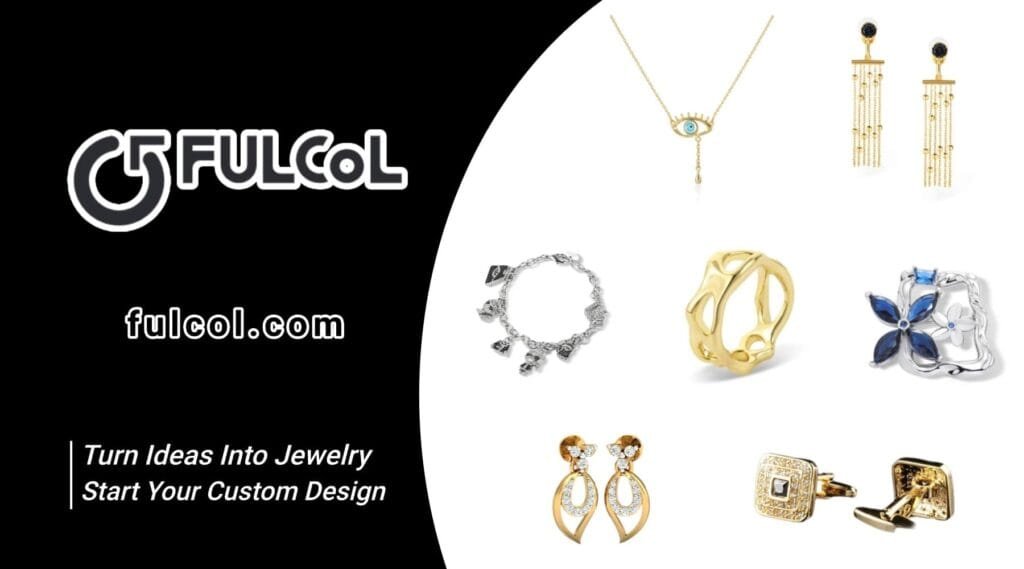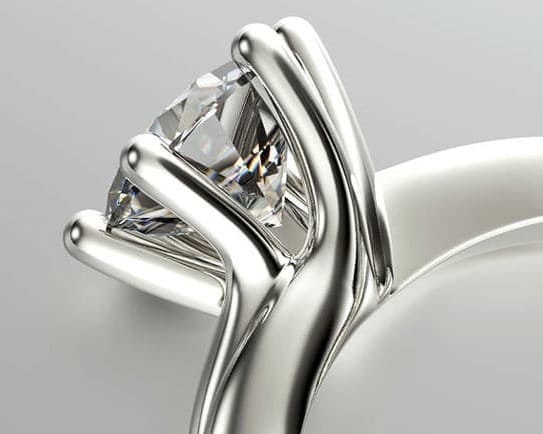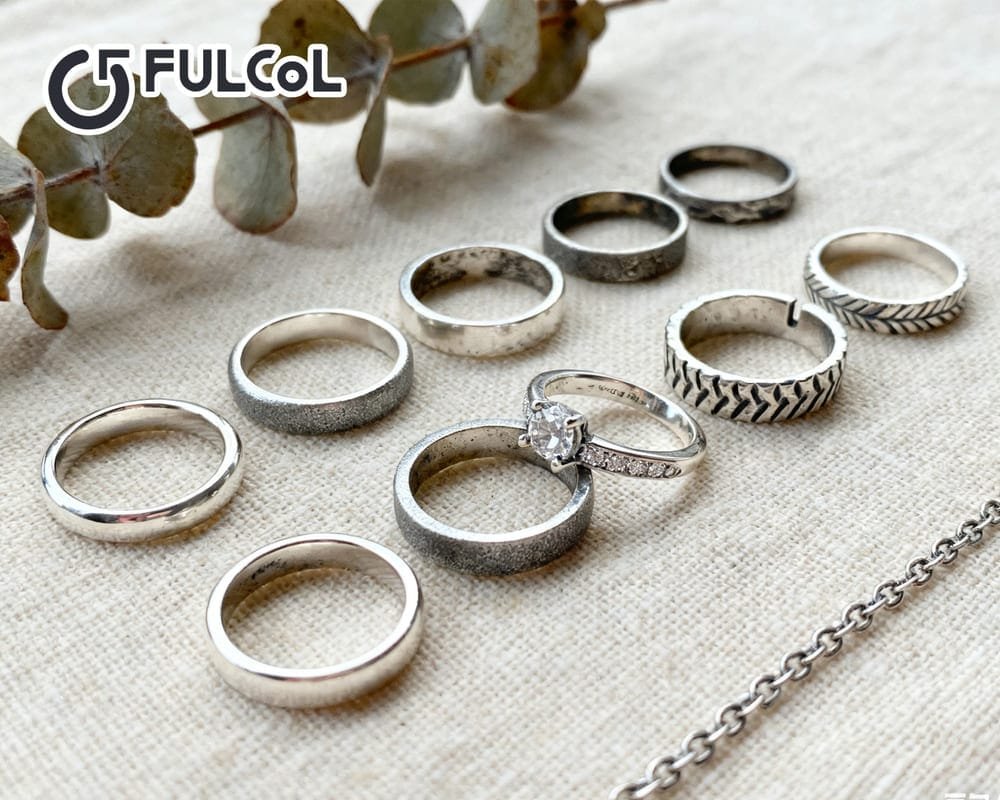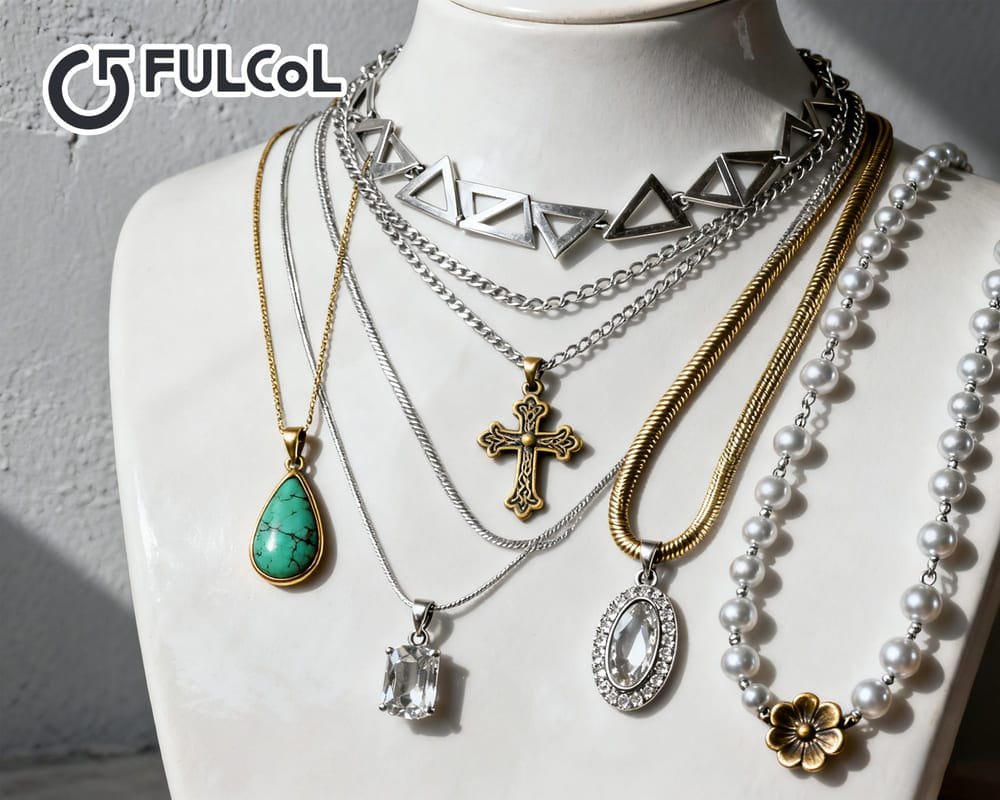When we gaze at a shining gemstone jewelry, we are often attracted by its brilliance and luxury, but ignore the craftsmanship and craftsmanship behind it. The transformation of gemstones from rough stones to finished products is a long and delicate process.
Behind this is not only a display of craftsmanship, but also an ultimate interpretation of precision, creativity and patience. Every cut and every inlay is the crystallization of the technology and art of jewelry craftsmen. The cutting and inlaying of gemstone jewelry are the two most critical and artistic links in the jewelry manufacturing process. For custom jewelry wholesale manufacturers like Fulcol, these processes not only represent the quality standards of the products, but also the soul of the brand and customer satisfaction.
Table of contents
- Gemstones from ore to jewelry: The first step starts with the selection of rough stones
- Precision cutting process: a key step in giving gemstones soul
- The secret of the setting process: the art of making gemstones stable and shining
- Fusion of craftsmanship and design: the value of custom jewelry wholesale manufacturers
- Quality control and finished product polishing: the behind-the-scenes standard of high-end jewelry
- Gemstone jewelry manufacturing under the trend of customization: How to meet personalized needs?
Gemstones from ore to jewelry: The first step starts with the selection of rough stones
The manufacturing of gemstone jewelry begins with the selection of raw materials, which is called “gem selection”, which is the basis for determining the value and visual effect of a piece of jewelry. Gemstone rough stones (ores) are graded according to their internal clarity, color, cutting potential and rarity. For example, sapphires need to present a saturated royal blue, while emeralds pursue uniform emerald green and few cracks.
High-quality gemstone jewelry manufacturers usually purchase rough stones directly from well-known origins, such as emeralds from Colombia, rubies from Myanmar, and sapphires from Sri Lanka. Professional buyers will use high-power magnifying glasses and spectrometers to check whether the gemstones contain cracks, impurities, color bands, etc.
Custom jewelry wholesale manufacturers are more concerned about whether they can match the color, shape, and size according to customer needs. For example, to customize a pair of sapphire earrings for an engagement ring, it is necessary to accurately plan the direction and facet potential of each gemstone from the rough stone, which places extremely high demands on the accuracy of the rough stone selection.
Precision cutting process: a key step in giving gemstones soul
Gemstone cutting is a highly technical step in the entire production process, which directly determines the brightness, fire, symmetry, and final visual value of the gemstone. The so-called “fire” refers to the rainbow luster reflected by the gemstone, which is mainly determined by the number of cutting faces and the accuracy of the angle.
Common cutting types and optical effects
Common cutting methods include brilliant cut, oval, emerald cut, marquise cut, pear cut and princess cut. Among them, brilliant cut is the first choice for wedding rings because of its maximum optical refractive index brought by 57-58 facets.
Emerald cut emphasizes transparency and plane reflection, which is suitable for gemstones with fragile internal structures such as emeralds. Each cutting method needs to be professionally designed according to the internal cracks, color bands and clarity of the gemstone rough stone.
Detailed explanation of professional cutting process
A standard gemstone cutting process usually includes the following steps:
Planning: Use 3D scanning and modeling software (such as Sarine or OGI) to plan the cutting method to ensure maximum weight and strongest fire.
Sawing: Use diamond saw blades to cut the rough stone into several small pieces. It should be noted that any slight angle error may lead to gem waste.
Bruting: Grinding the rough-cut gemstone into a basic outline, usually using another diamond.
Faceting: Carving multiple facets with precise angles on the surface of the gemstone, which is the key step in determining the refraction of light from the gemstone.
Polishing: Finally, diamond powder and special polishing discs are used to make each facet as smooth as a mirror.
Skilled gem jewelry manufacturers will use corresponding speeds and pressures to cut according to different gemstones (such as the hardness of diamond is 10, while Tanzanite is only 6.5) to ensure that the fire is maximized without damaging the gemstone.
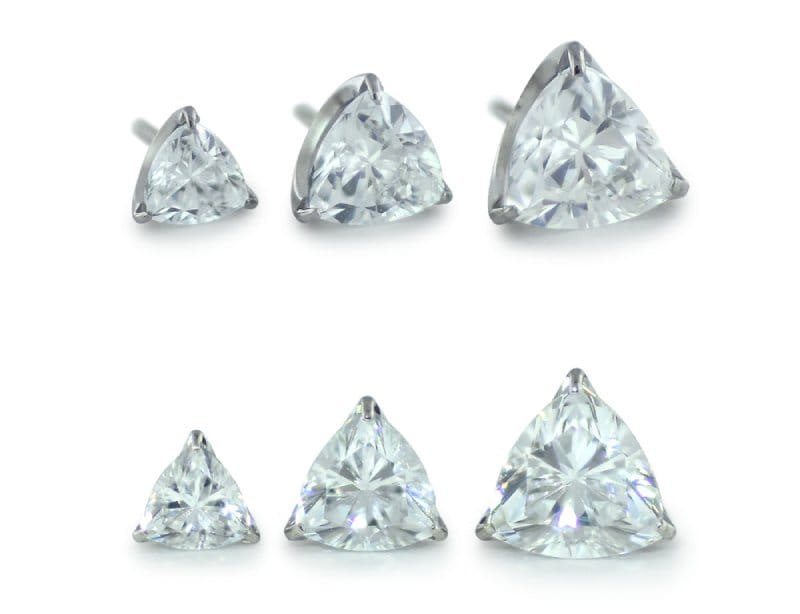
The secret of the setting process: the art of making gemstones stable and shining
After cutting, the gemstone cannot be worn directly, and needs to be fixed on the metal base through a precise setting process. Setting is not just “installing”, it determines the safety, durability, and even visual effect of the gemstone.
Detailed explanation of mainstream setting methods
Prong Setting: The most classic diamond setting method, using 3-6 metal claws to fix the gemstone to maximize the exposure of the light entry path.
Bezel Setting: Metal is wrapped along the edge of the gemstone, which is more stable and suitable for daily jewelry that is often worn.
Pavé Setting: Multiple small diamonds are closely inlaid, often used on the edge of the ring and pendant, visually as if covered with diamonds.
Channel Setting: The gemstone is embedded in a metal channel, often used in men’s rings or wedding ring tracks.
Invisible Setting: No metal is exposed on the surface, visually it is like a whole piece of gemstone spliced together, which requires extremely high craftsmanship.
Professional gem jewelry manufacturers will consider the hardness, shape, purpose and customer wearing habits of the gemstone when choosing the setting method. For example, sports enthusiasts may be more suitable for bezel setting, while stage performers prefer claw setting with high light reflection.
Setting process and application of microscopic technology
Design matching base: Use CAD software to design the size and structure of the metal base, which fits the shape of the gemstone perfectly.
Manually adjust the metal slot: Use precision pliers and hand tools to adjust the metal edge.
Microscopic Setting: Use pointed tweezers under a microscope to place gemstones one by one to ensure neat arrangement and tightness.
Firmness test and polishing: After the setting is completed, shake and tap the test, and finally polish the metal part to ensure that there are no burrs and no pinching.
Professional custom jewelry wholesale manufacturers such as Fulcol usually have multiple full-time setting technicians to meet the needs of different setting methods, and can also undertake custom orders with customer-specified setting styles.
Fusion of craftsmanship and design: the value of custom jewelry wholesale manufacturers
In custom jewelry, customer needs are the starting point of the entire design process. Gem jewelry manufacturers are not only producers, but also executors of creativity and gatekeepers of quality.
From sketch to finished product: the application of CAD in design
The designer will first draw a sketch by hand, then model it through CAD software, and generate a 3D rendering for the customer to confirm. On this basis, choose the setting method, determine the number and size of gemstones.
Many gem jewelry manufacturers also introduce virtual try-on systems during the design process, allowing customers to “wear” jewelry in advance to ensure a personalized experience.
Examples of coordination between design and craftsmanship
For example, when designing an emerald pendant for a customer, the design team needs to maintain the classic bezel setting while enhancing the contrast of the gemstones through metal polishing to reflect a modern feel. This ability to integrate design concepts and craftsmanship details is the advantage of custom jewelry wholesale manufacturers such as Fulcol.
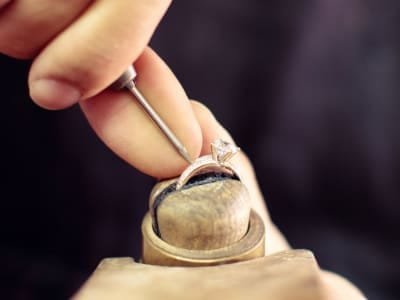
Quality control and finished product polishing: the behind-the-scenes standard of high-end jewelry
After the gemstones are set, the jewelry still needs to go through a series of rigorous quality inspections and surface treatment steps.
Inspection content and standards
- Setting firmness test: Use a vibrator and light shaking to check whether the gemstones are loose.
- Cutting symmetry check: Observe whether the angles of each cut surface are balanced and consistent.
- Polishing quality test: Whether the gloss is uniform, whether there are metal burrs and scratches.
- Weight and size measurement: The finished product must strictly comply with the design drawing parameters.
Custom jewelry wholesale manufacturers are usually equipped with professional equipment such as digital microscopes, diamond testers, and specific gravity meters to ensure that every piece of jewelry delivered can meet high-end standards.
Fulcol has established a complete production traceability system. From gemstone raw material procurement, cutting, inlaying to finished product testing, each link is numbered and recorded and signed by quality control personnel. It not only improves quality consistency, but also provides strong quality assurance for wholesale customers and end users.
Gemstone jewelry manufacturing under the trend of customization: How to meet personalized needs?
Nowadays, consumers’ requirements for jewelry are no longer limited to beauty or price, but more concerned about whether it is “unique”. This has promoted the accelerated transformation of customized jewelry wholesale manufacturers.
Personalized customization and flexible production
Modern gemstone jewelry manufacturers use small batches and multiple categories of flexible production lines, combined with ERP systems and customer customization platforms to achieve order-based production. For example, the online customization system launched by Fulcol allows customers to choose gemstone types, metal materials, and engraving content. The system automatically generates work orders and enters the production link.
Digitalization promotes manufacturing innovation
Using 3D printing technology to make wax molds not only shortens the production cycle, but also reduces mold opening costs, making small batch orders also have cost advantages. Big data also helps manufacturers predict popular styles and customer preferences, so as to make precise designs.
| Start Your Custom Order | Email: info@fulcol.com | Number: +86 13055603907 |
The value of gemstone jewelry lies not only in the rarity of the gemstone itself, but also in the complex, precise and careful manufacturing process behind it. Every cut and every inlay embodies the wisdom and dedication of gemstone jewelry manufacturers and custom jewelry wholesale manufacturers. As a professional gemstone jewelry manufacturer in the industry, Fulcol has always promoted the development of gemstone jewelry customization with high standards, innovative thinking and a responsible attitude. If you are looking for a manufacturing partner who can truly turn creativity into reality, you might consider entering Fulcol behind the world of craftsmanship.
